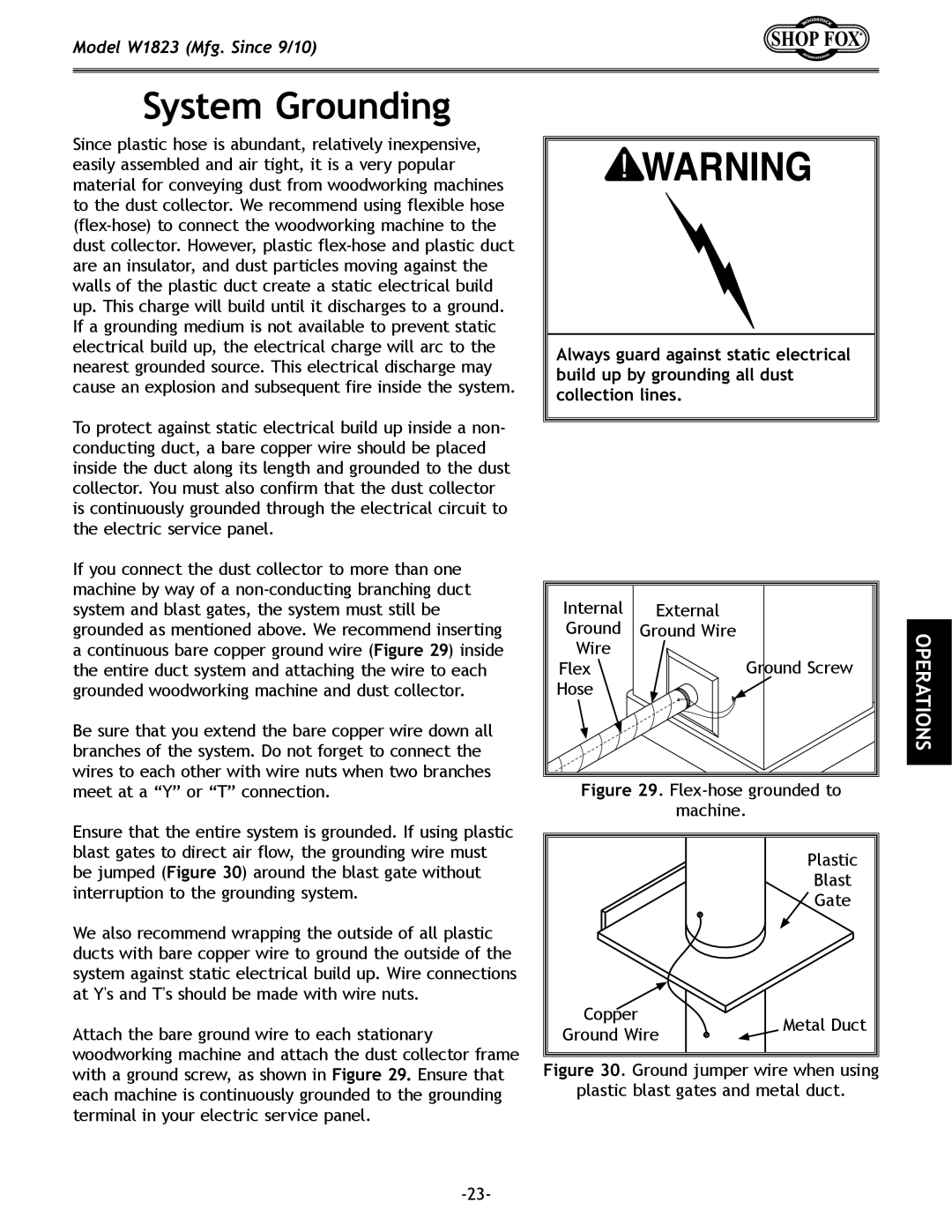
Model W1823 (Mfg. Since 9/10)
System Grounding
Since plastic hose is abundant, relatively inexpensive, easily assembled and air tight, it is a very popular material for conveying dust from woodworking machines to the dust collector. We recommend using flexible hose
To protect against static electrical build up inside a non- conducting duct, a bare copper wire should be placed inside the duct along its length and grounded to the dust collector. You must also confirm that the dust collector is continuously grounded through the electrical circuit to the electric service panel.
Always guard against static electrical build up by grounding all dust collection lines.
If you connect the dust collector to more than one machine by way of a
Be sure that you extend the bare copper wire down all branches of the system. Do not forget to connect the wires to each other with wire nuts when two branches meet at a “Y” or “T” connection.
Ensure that the entire system is grounded. If using plastic blast gates to direct air flow, the grounding wire must be jumped (Figure 30) around the blast gate without interruption to the grounding system.
We also recommend wrapping the outside of all plastic ducts with bare copper wire to ground the outside of the system against static electrical build up. Wire connections at Y's and T's should be made with wire nuts.
Attach the bare ground wire to each stationary woodworking machine and attach the dust collector frame with a ground screw, as shown in Figure 29. Ensure that each machine is continuously grounded to the grounding terminal in your electric service panel.
Internal | External |
|
|
Ground | Ground Wire |
| OPERATIONS |
Wire |
| Ground Screw | |
Flex |
| ||
Hose |
|
| |
|
|
|
Figure 29. Flex-hose grounded to
machine.
| Plastic | |
| Blast | |
| Gate | |
Copper | Metal Duct | |
Ground Wire | ||
|
